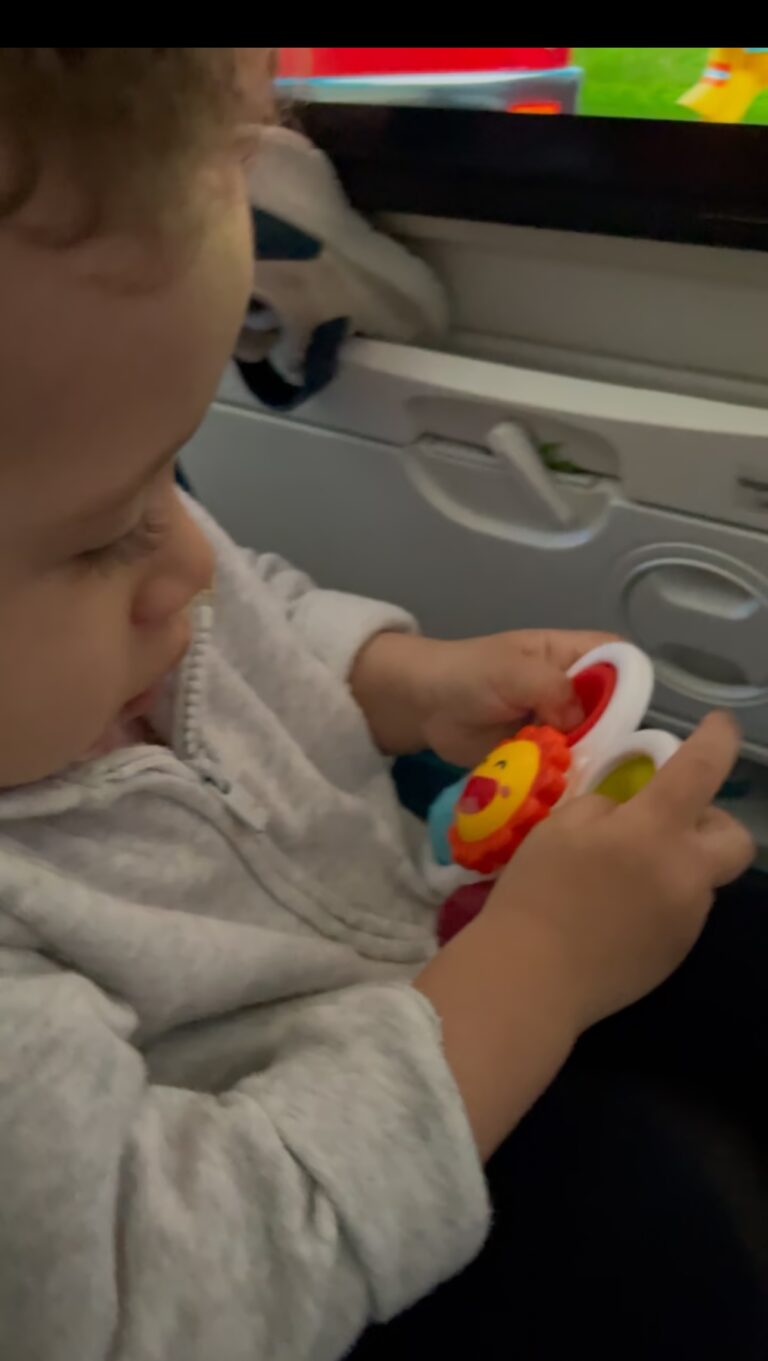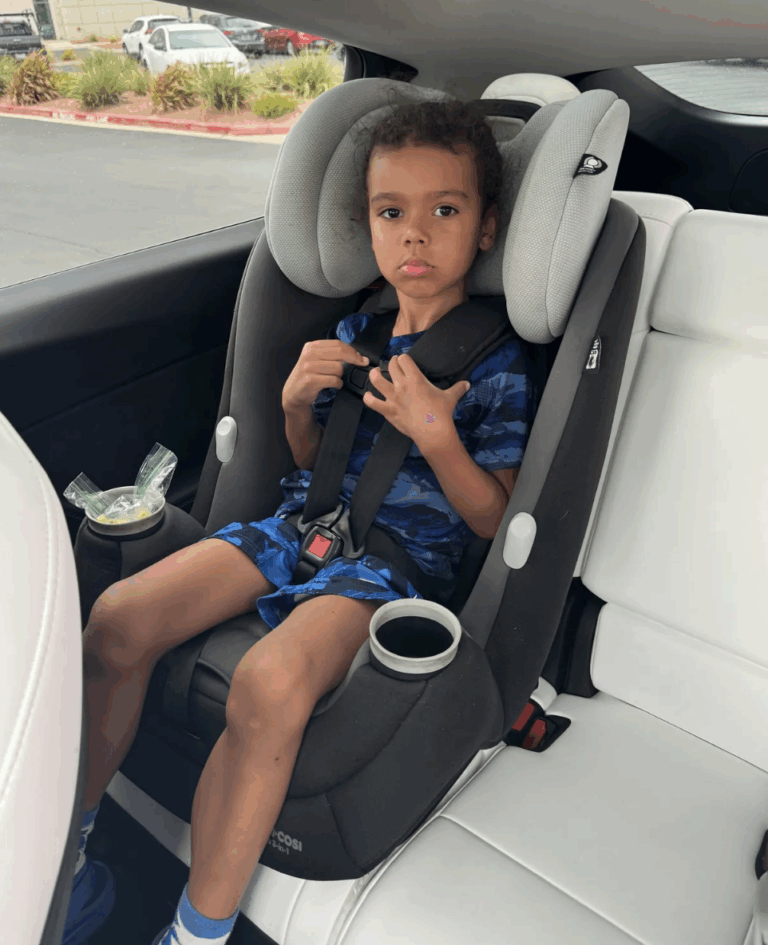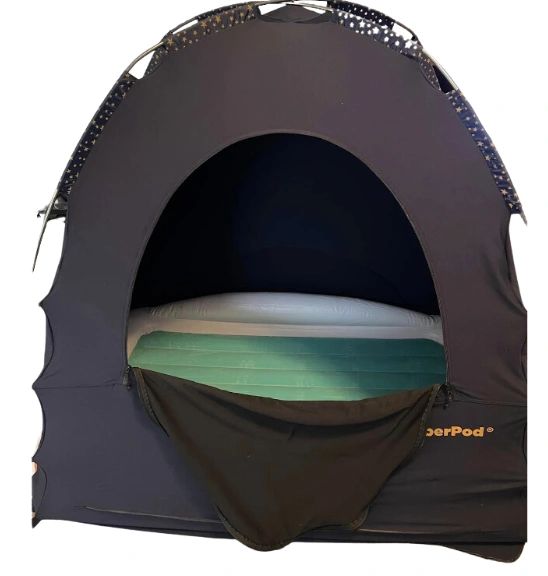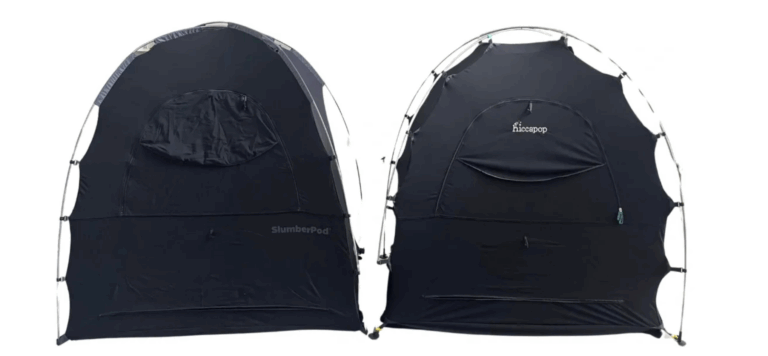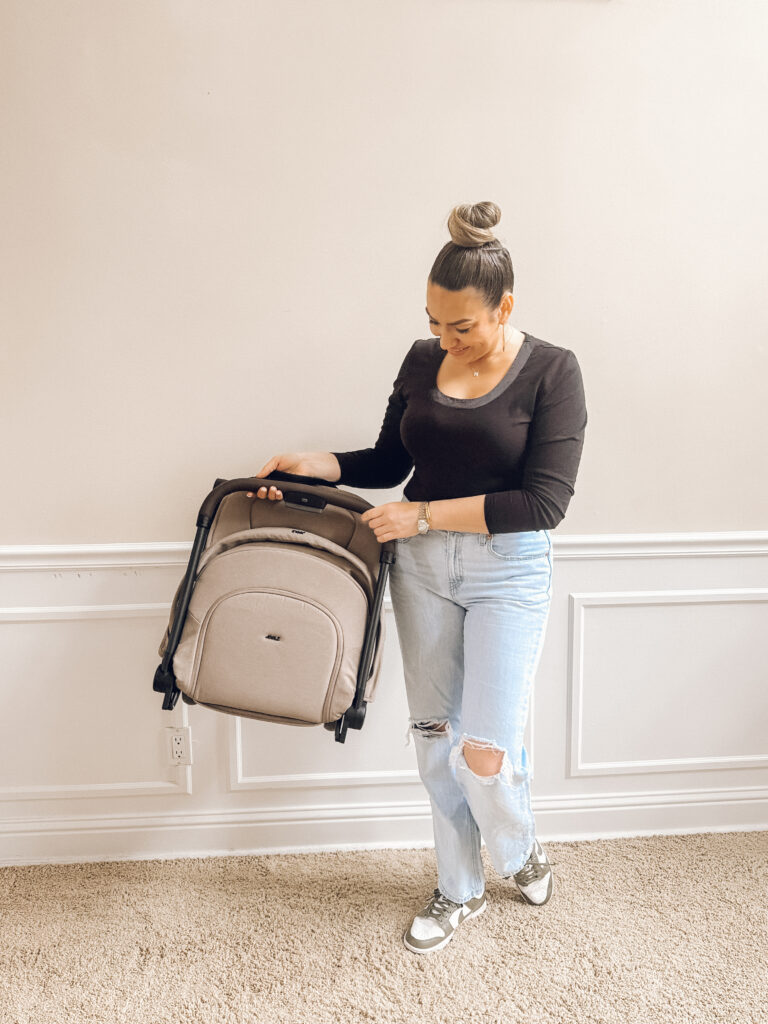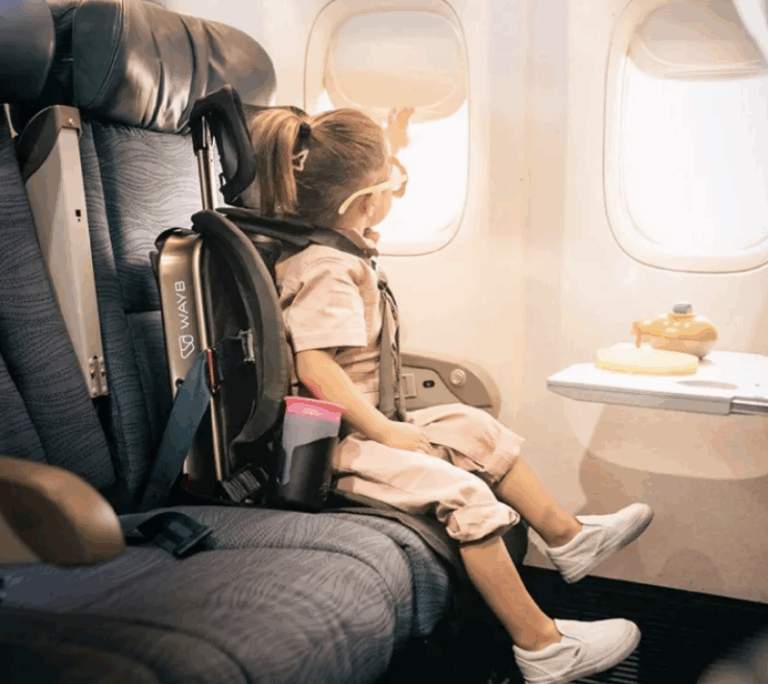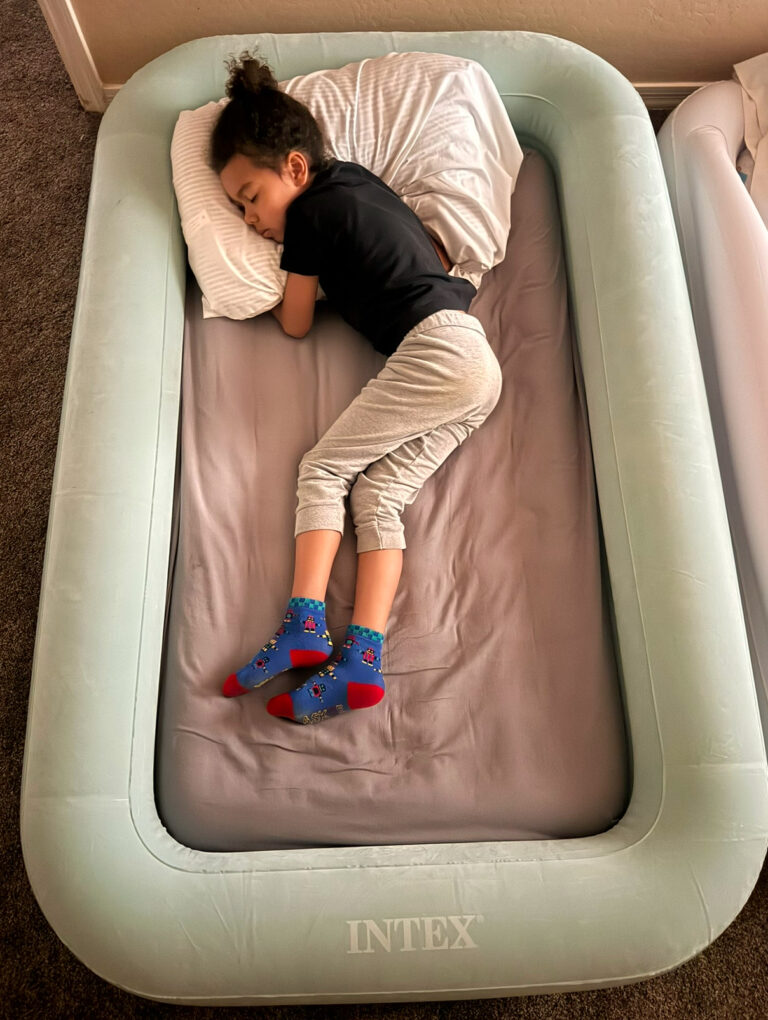CARES Harness: 7 Things You Should Know
Traveling solo with two young kids is no joke. If you’ve ever lugged a car seat (or two) through a crowded airport, you know exactly what I mean. I’ve done it more times than I can count, and was hoping to find a safe alternative to bringing my daughter’s Cosco Scenera and my son’s Graco travel car seat onboard.
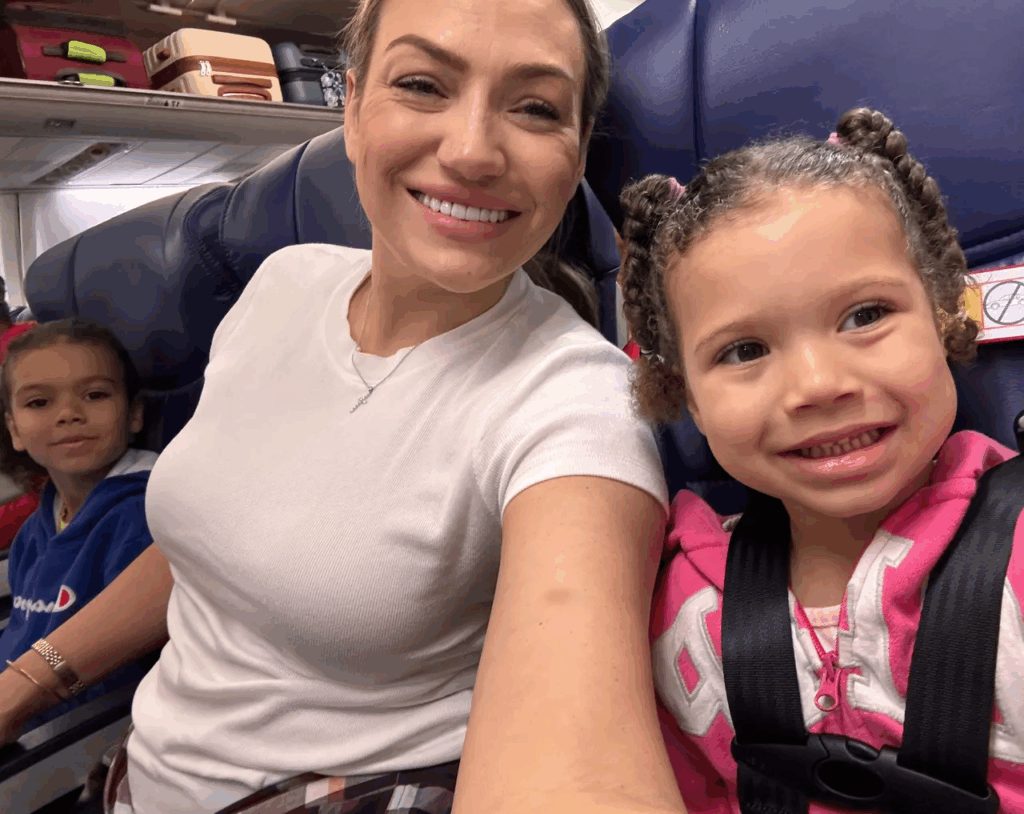
Before one of our recent flights, I paused and thought—Do I really need to bring car seats on the plane if we’re not using them at our destination? That’s when I started researching safer, simpler options for in-flight child safety, and found the CARES harness.
The CARES harness is FAA-approved and designed specifically for airplane use, making it a lightweight alternative to traditional car seats when flying with toddlers and young kids. After using it on several trips, including our latest flight on Southwest Airlines in April 2025, I’m ready to share everything parents need to know before purchasing.
If you’re wondering whether the CARES harness is worth it, how it actually works, and what to expect—this post covers it all. I’m sharing the pros, the cons, and our honest experience to help you decide if it’s the right choice for your next flight.
Related: 5 Easy Ways to Transport a Car Seat Through the Airport
Table of Contents
1. What is a CARES Harness?
The AmSafe CARES harness (Child Aviation Restraint System) is an FAA-certified safety harness designed specifically for air travel. It secures around the back of the airplane seat and works in addition to the regular seatbelt to safely restrain a child in their own seat. To use the harness, your child must be able to sit upright unassisted and face forward during the flight.
The CARES harness is approved for use on airplanes only—it’s not intended for cars or other forms of travel. It can be used in economy, business, and first-class seats, and it’s currently the only FAA-certified harness-type child safety device recognized as a car seat alternative for in-flight use. One of its biggest perks? It weighs just one pound, making it an incredibly lightweight and travel-friendly option for parents.
Other key factors important to note directly from their website:
- Certified by the Air Authorities in Canada (TC), UK (CAA), France (DGAC), Australia (CASA), New Zealand (CAA), Singapore (CAAS), Japan (JCAB), United Arab Emirates (GCAA), and Oman (DGCAM).
- Approved for use by many international airlines ( always double check).
2. CARES Harness Weight Limit
CARES harness is designed for children who weigh between 22-44 lb, and are up to 40 inches tall.
3. CARES Harness Age Limit
To safely use the CARES harness, children must be able to sit on their own in the seat and must be at least 1 years old. The recommended age ensures that the child can sit upright and be properly secured during the flight. I did not find a specific age limit on the Amsafe website.
Most important is the weight limit, as a child must weigh between 22 and 44 pounds.
Related: Is WayB Pico Car Seat Worth the Hype? 2025 Review
4. Is the CARES Harness FAA-Approved?
Yes, the CARES harness is the only FAA-approved Child Aviation Restraint System. In fact, it’s the first and only harness-type aviation child safety device to be certified by the Federal Aviation Administration (FAA) as a safe alternative to a car seat for air travel.
5. CARES Harness vs Car Seat
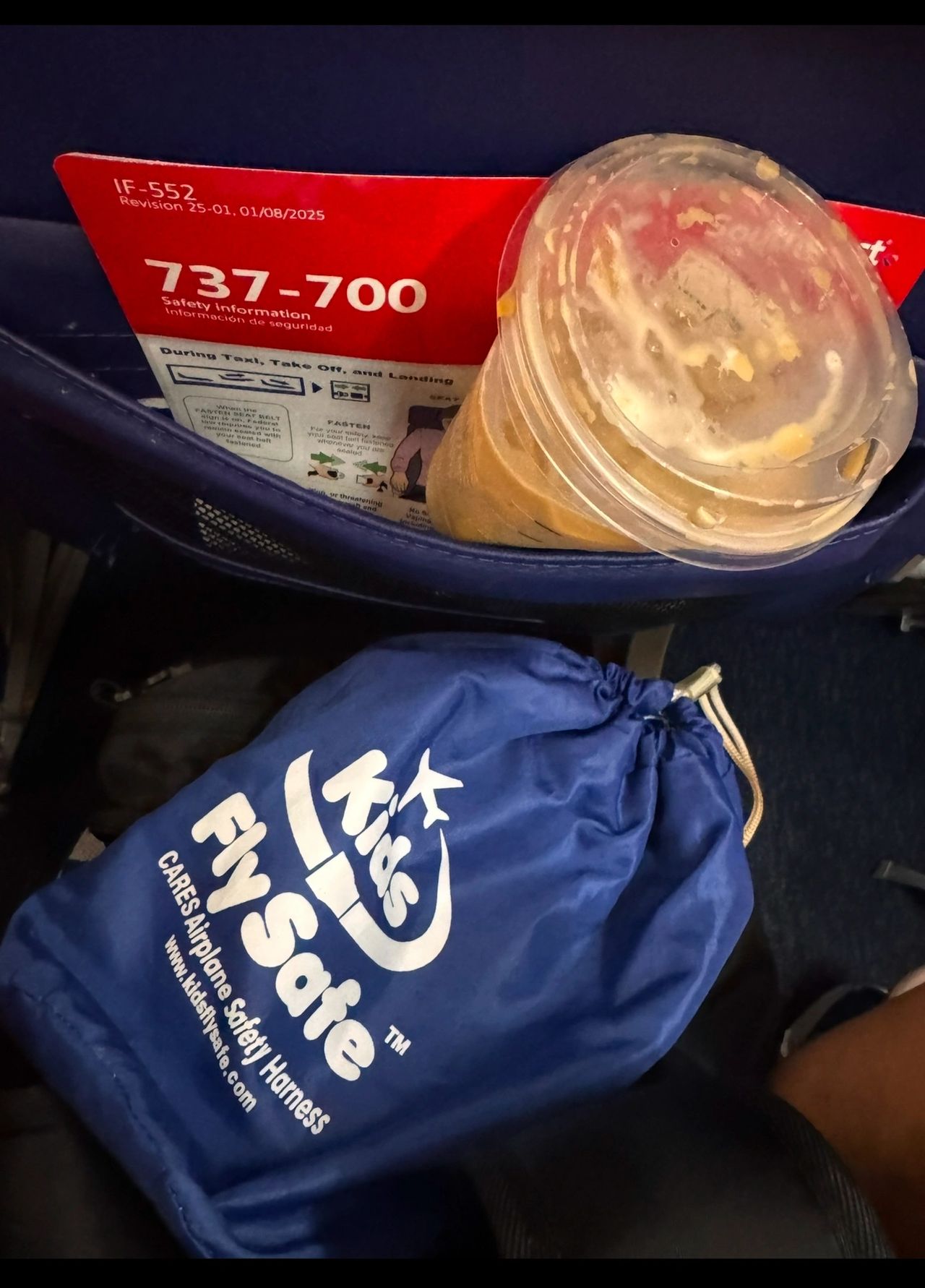
When flying with a car seat, there are a few things you need to know. Car seat can be inconvenient to transport through the airport, however, it’s a safe way for your little one to travel.
With that being said, a CARES harness is designed and created by AmSafe, and they’re known to be the global leaders in aviation restraints. FAA states that: ‘the safest place on an airplane for children under 2 years is in an approved child car seat or device based on the child’s weight.
There are pros and cons to using both (car seats and the harness). Depending on the length of the flight, one might be better than the other.
For shorter flights like our last one (which was about 3 hours), I decided on the CARES harness and had no regrets. I was traveling alone with two littles and it’s the option that made the most sense to me. It was quick to install and made my life so much easier.
For flights that are longer, a car seat would be more comfortable and help contain the child for the duration of the flight.
6. CARES Harness Pros
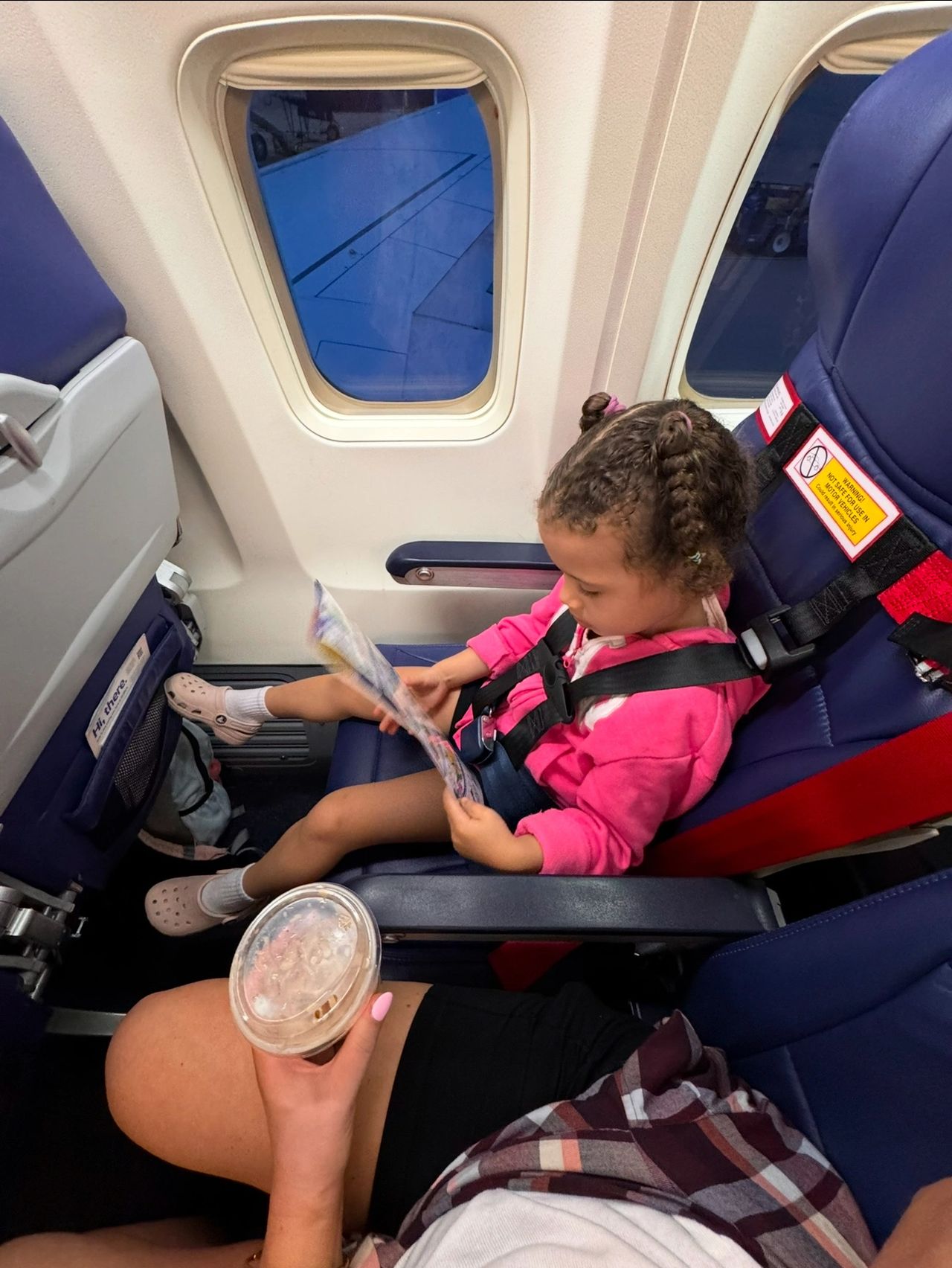
- safe and secure
- great alternative to a car seat + is one of a kind
- gives the child room to move around
- usable on any window or center seat in the airplane (except in the emergency exit rows)
- easy to install: takes only one minute
- can still use the tray table
- light: weighs only 1 lb
- easy to pack & comes with a bag
- keeps your child in the seat
- it’s much cozier like regular car seat straps
- peace of mind for parent for the safety of their child
7. CARES Harness Cons
- Sliding issues: Some kids tend to slide into awkward positions since there’s no strap between the legs (we didn’t have this issue).
- No use beyond the plane: can’t be used in cars.
- Cost: CARES harness is cheaper than most car seats, but it’s more expensive than our favorite budget-friendly, and lightweight option like the Cosco Scenera NEXT.
These factors weren’t deal breakers for us but are worth noting.
In conclusion.. Is CARES Harness Worth It?
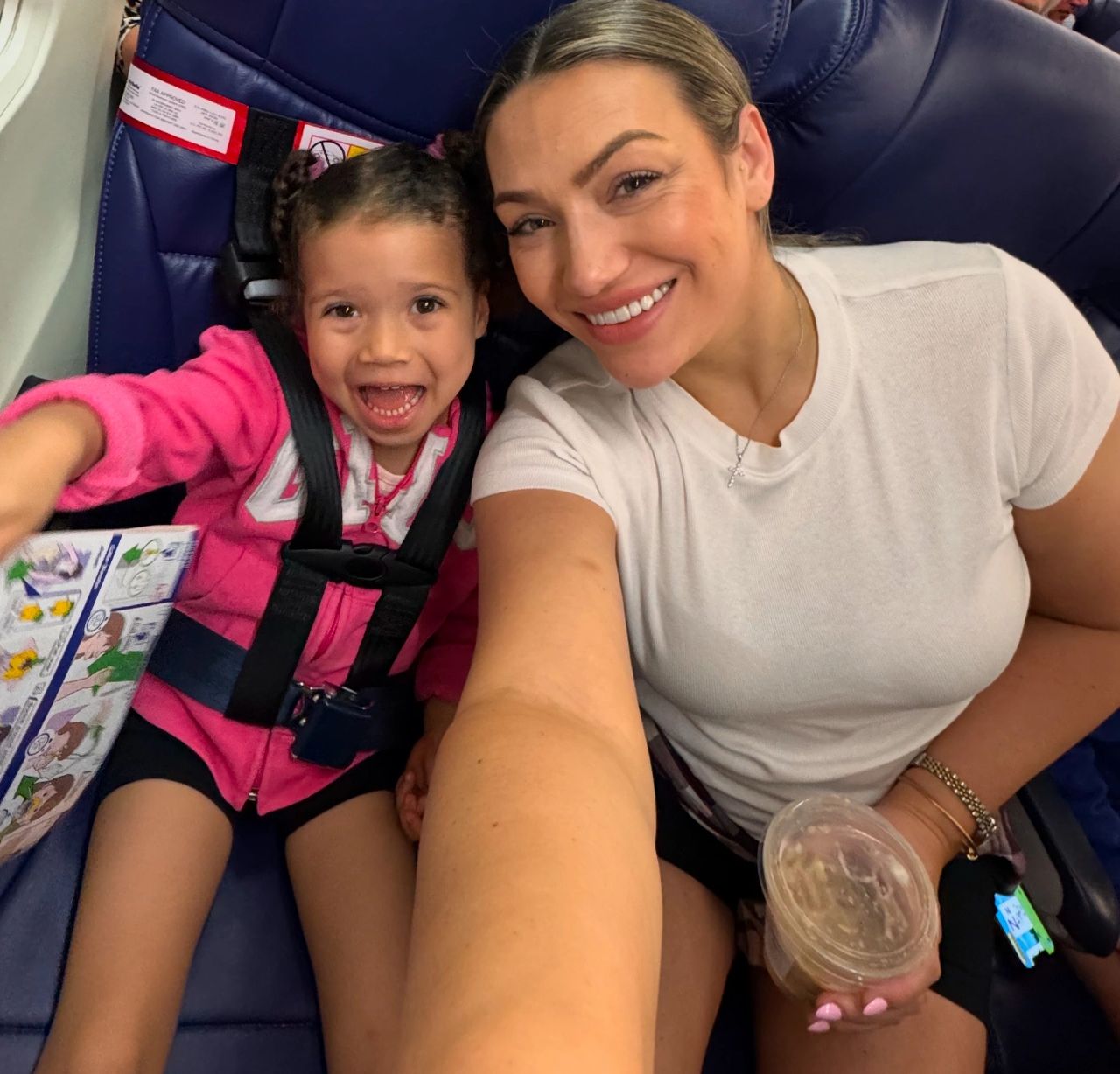
Absolutely. CARES harness is easy to install, super lightweight, and a total game-changer if you’d rather not lug a car seat through the airport. I find it a lot easier to deal with on the plane than a car seat.
We fly often to visit family and already have car seats at their house, so having the harness has been perfect as it barely takes up space in my carry-on, and I still have peace of mind knowing my child is safely secured in their seat.
For us, the pros definitely outweigh the cons. That said, for long international flights or trips where you’ll need your car seat at your destination, I’d suggest bringing a car seat onboard instead, not just for safety, but also to avoid the risk of damage when checking it.
Related: Joolz Aer: Overhyped or Worth It? Here’s What I Found Out! 2025
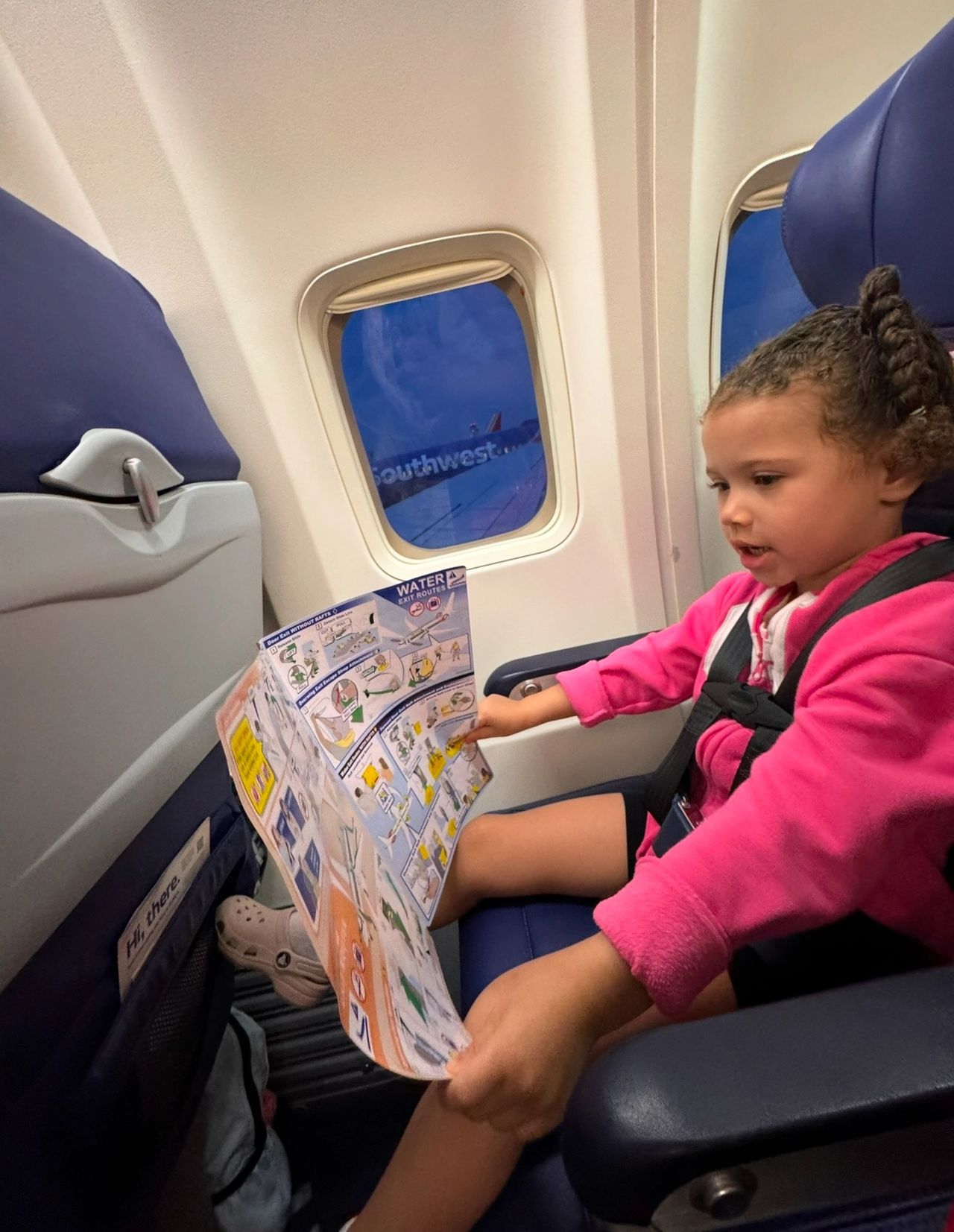
Where to Buy a CARES Harness?
Be cautious when buying a CARES harness from random websites—many of them sell counterfeit versions that don’t meet safety standards. According to the FAA, it’s best to “buy direct from the manufacturer to be sure the CARES device you use is authentic and manufactured with the same industrial-strength webbing as aircraft seat belts.”
To make sure you’re getting the real deal, here are two trusted places to purchase the harness:
- Amazon: Make sure it’s sold by the official CARES KIDS FLY SAFE brand only. Click here to shop on Amazon
- Direct from AmSafe (the manufacturer): Shop directly from AmSafe
- Walmart: Click here to shop at Walmart
1. How Do You Install a CARES Harness?

To install a CARES harness, follow these steps.
1. After taking the harness out of its protective bag, lower the tray table on the seat behind where your child will sit. If someone is already seated there, let them know what you’re doing and ask for them to temporarily lower it.
2. Wrap the red strap around the back of the seat. Make sure the two black straps are hanging down with the buckles facing outward.
3. Adjust the red strap so it sits at or just above your child’s shoulders. Pull it tight so it stays in place.
4. Thread the plane’s seat belt through the loops at the bottom of the black straps.
5. Buckle and tighten the airplane seat belt around your child.
6. Put the tray table back up for the passenger behind you once you’re done.
That’s it! Your child is now safely and securely harnessed for the flight.
2. What age can you use a CARES harness?
You can use a CARES harness when your child is 1 or older.
3. Can I use a CARES harness in a car?
No, CARES harness is not made for use in a car. It is for aircraft use ONLY. Do NOT use the CARES harness in the car as it is unsafe for the child.
4. Does a 3 year old need a care harness?
A CARES harness is not required for 3-year-olds, but it is recommended for added safety during flight. If you’re not bringing a car seat on board, the CARES harness is a convenient and FAA-approved alternative. It’s designed for children ages 1-5 years old weighing between 22 and 44 pounds, and up to 40 inches tall.
Amazon Storefront
Don’t forget to visit my Amazon storefront, where you’ll find thoughtfully curated selections of travel essentials.
1. Traveling with a Toddler

2. Travel Essentials

3. Airport Outfit Ideas


Traveling with Toddlers? You might also enjoy these posts.
1. 3 Best Toddler Travel Bed Options to Use After Pack and Play 😴
2. Babyzen YoYo2 Stroller Review and Pros/Cons 2025
3. Is Slumberpod Worth It? Honest Slumberpod Review 2025 ✈️
4. 10 Proven and Effective Ways to Pop Your Toddlers Ears on a Plane 👂
5. Top 3 Easy Ways to Transport a Car Seat Through the Airport 🌴
Written by: Melanie Suggs

Melanie is a nurse, a coffee-lovin’ mama of two, and a frequent flier who has visited 17+ countries, lived overseas in Asia, Europe, and the States, and has taken her toddlers on international travels since they were 16 weeks old.
With her extensive experience in flying and traveling with her family, she developed a passion for helping parents travel with ease through tips, suggestions, and reviews on her blog.

